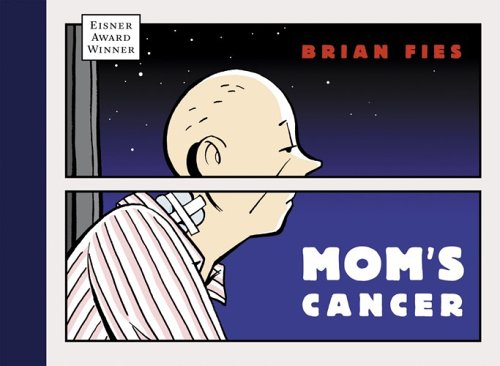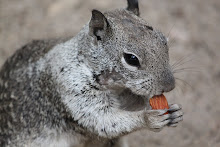
Brian Fies (copyright Brian Fies).
As a UC Davis alumni (Go Aggies), Fies' started working on what became his first published book, not with the goal of publishing it in mind, but rather, as a personal project that drew on his family's struggle with his mother's lung cancer. Hence the name, Mom's Cancer. When she was diagnosed with lung cancer, Fies documented the process through sketches, from her chemotherapy sessions, to the tension that grew between him and his sisters, to his mother's last birthday party and subsequent goodbye. Working through the situation, his struggles were translated from ink to paper, and then on the internet. Unbenounced to his family, he posted the comic of their story on the web, and soon he had many readers, eventually leading to his discovery by an editor. One thing let to another, and finally Fies could hold a tangible comic book that can now be found in book stores.

Brian Fies, panel from Mom's Cancer
By transforming a blank piece of white paper, through sketches and character development, and working with designers and publishers to create a book cover, the process of making a comic book is an extremely detail-oriented and expressive experience. By presenting a sequential series of panels, comics serve as a simplified form of storytelling, using words in a direct and concise way (in Fies' case, the words are handwritten, creating a more authentic print), knowing that the audience reads the text first and refers to the picture secondarily. Because of the physical layout and format of a comic book, the illustrator seeks to distill the essence of each page or scene, using form to communicate meaning.

Brian Fies, panel from Mom's Cancer
A quote that Fies' closed his lecture with, and one that I have been aware of for most of my life (something my dad has referenced many times), beautifully said by Blaise Pascal, goes like this:
"I apologize that I made this letter so long, I did not have time to make it short."
These words are useful and incredibly relevant to designers, as it speaks to the challenge we face in being as direct as possible in communicating a message to our viewers.To reference once again Gary Hustwit's documentary Objectified, designer Dieter Rams discusses the notion that good design is "as little design as possible."Fies' work displays comics as a medium that combines words and pictures, transforming time and space. After having been exposed to Fies' creative process, we catch a glimpse of how we, as artists or designers, face challenges, work within our constraints, and have the ability to articulate ideas and successes in our work.

No comments:
Post a Comment